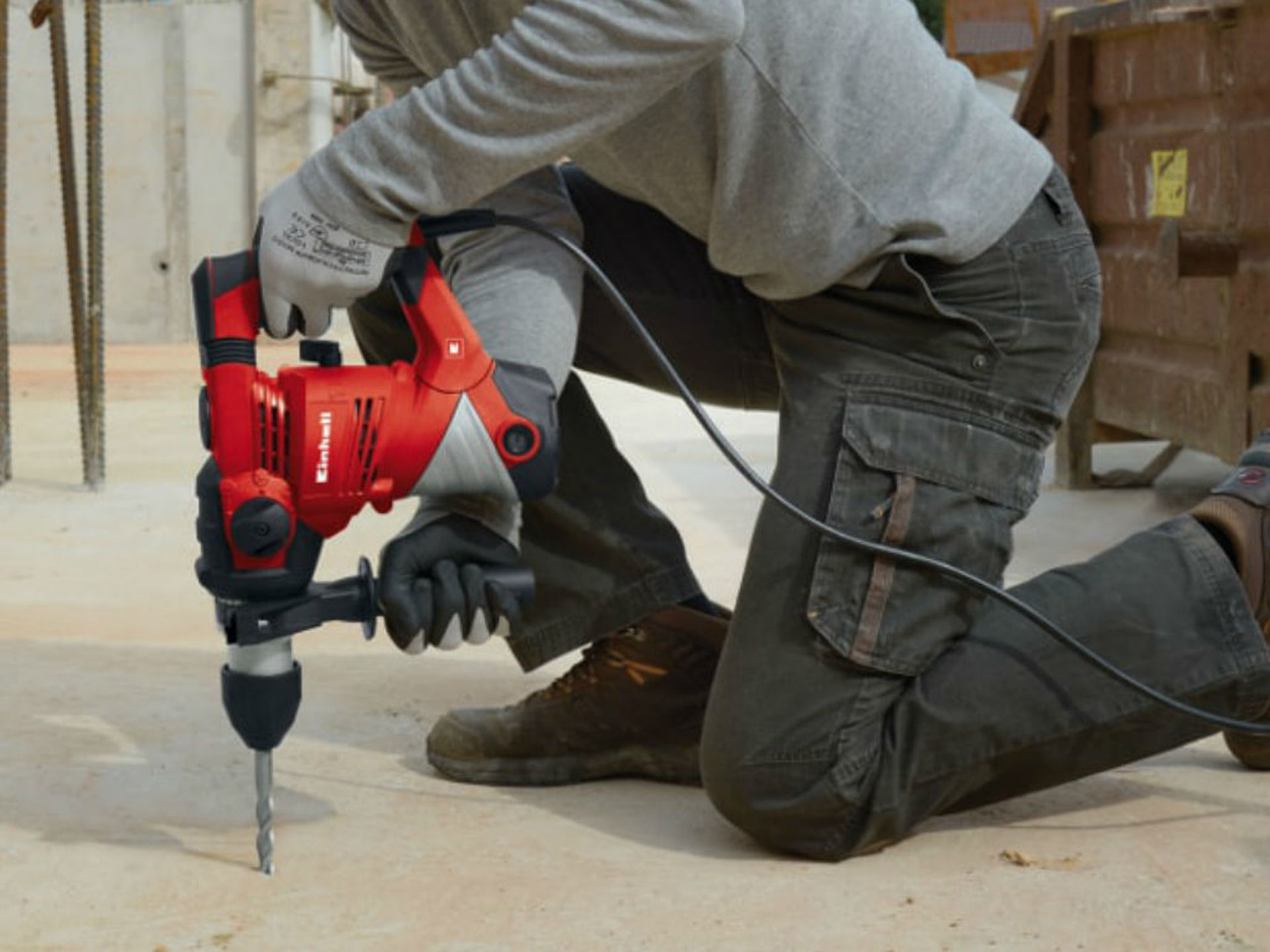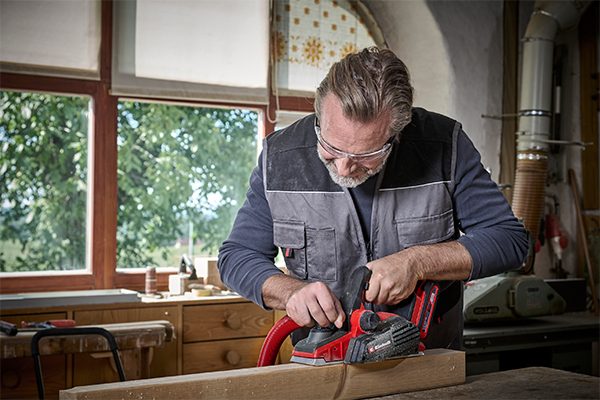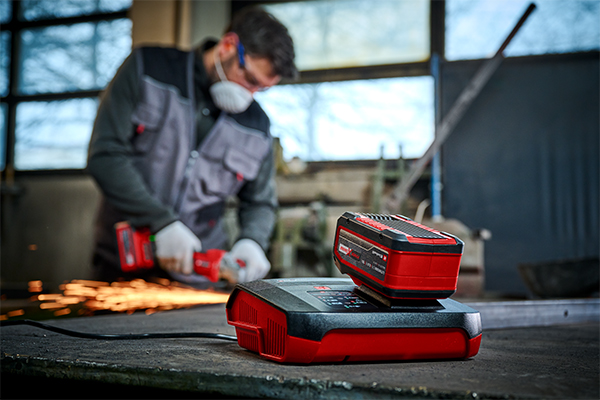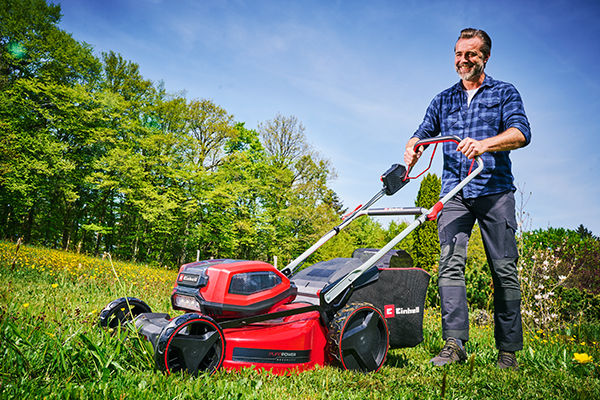Redrilled: Rotary hammer or impact drill?
An impact drill is the all-round tool in almost every well-stocked DIYer's household. As well as drilling, with the impact drill, you can also screw. Drilling light materials such as wood, porous concrete or perforated brisk is also no problem for this machine. However, if the subsurface becomes bigger or even if chiselling work is to be done, you should reach for the rotary hammer. But what are the differences between an impact drill and a rotary hammer and which machine do I need for my projects?
The impact drill
The impact drill is, as already mentioned, a universal tool that can be used both for drilling, with or without impact, or for screwing in screws.
Through its mechanical impact mechanism, the drill used offsets the actual impact into vibrating movements. The impact hammer drill generates the impact purely mechanically through the arrangement of the gears in the transmission.
The impact of the impact drill can be completely deactivated with a switch when drilling wood or plasterboard. This makes it possible to use the impact drill as a traditional drill too.
In contrast to the rotary hammer, the impact drill requires a huge amount of force when drilling hard materials. As the impact is generated purely mechanically here, the impact hammer drill lacks the actual propulsion. This lack of propulsion must be exercised by the user in the form of pressure on the machine.
Compared to the rotary hammer, the impact drill has a much higher impact frequency and therefore a higher noise level. When working with the impact drill, you should always wear suitable ear protection.
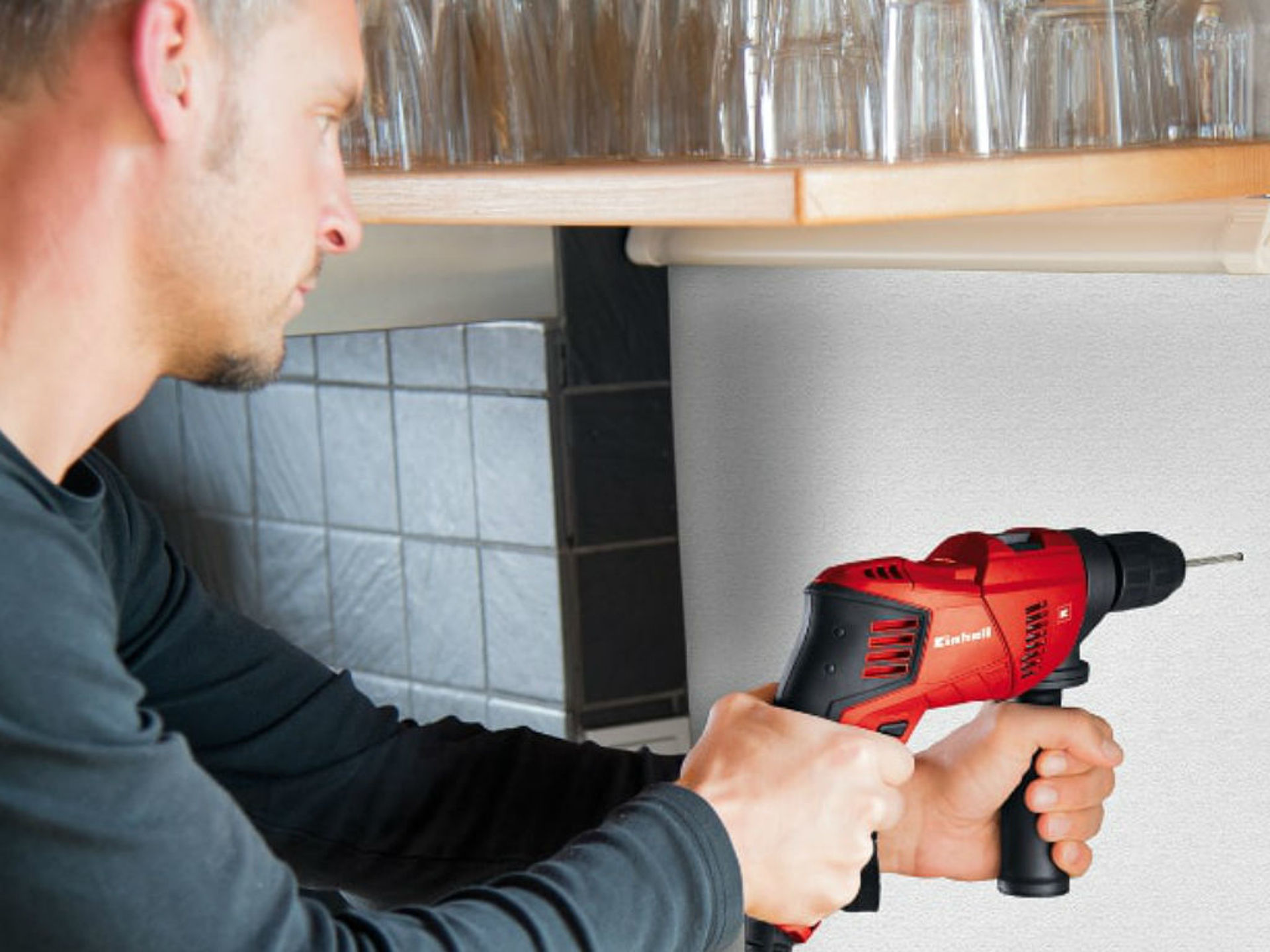
The rotary hammer
In contrast to the impact drill, the rotary hammer has an electropneumatically driven impact mechanism.
The rotational movement of the electric motor is diverted via the drive bearing and a piston into a lifting movement. This distributes the resulting negative pressure through the so‐called mallet in the direction of the clamped drill and thus produces an axial movement. Despite their lower power consumption and lower impact frequency compared to impact drills, rotary hammers are far superior to them due to the different concept of impact force.
Thanks to its electropneumatic impact mechanism, the rotary hammer drives the drill bit almost independently into the wall. The effort required here is extremely low and focuses primarily on positioning the rotary hammer at the correct angle in front of the wall and holding it in position.
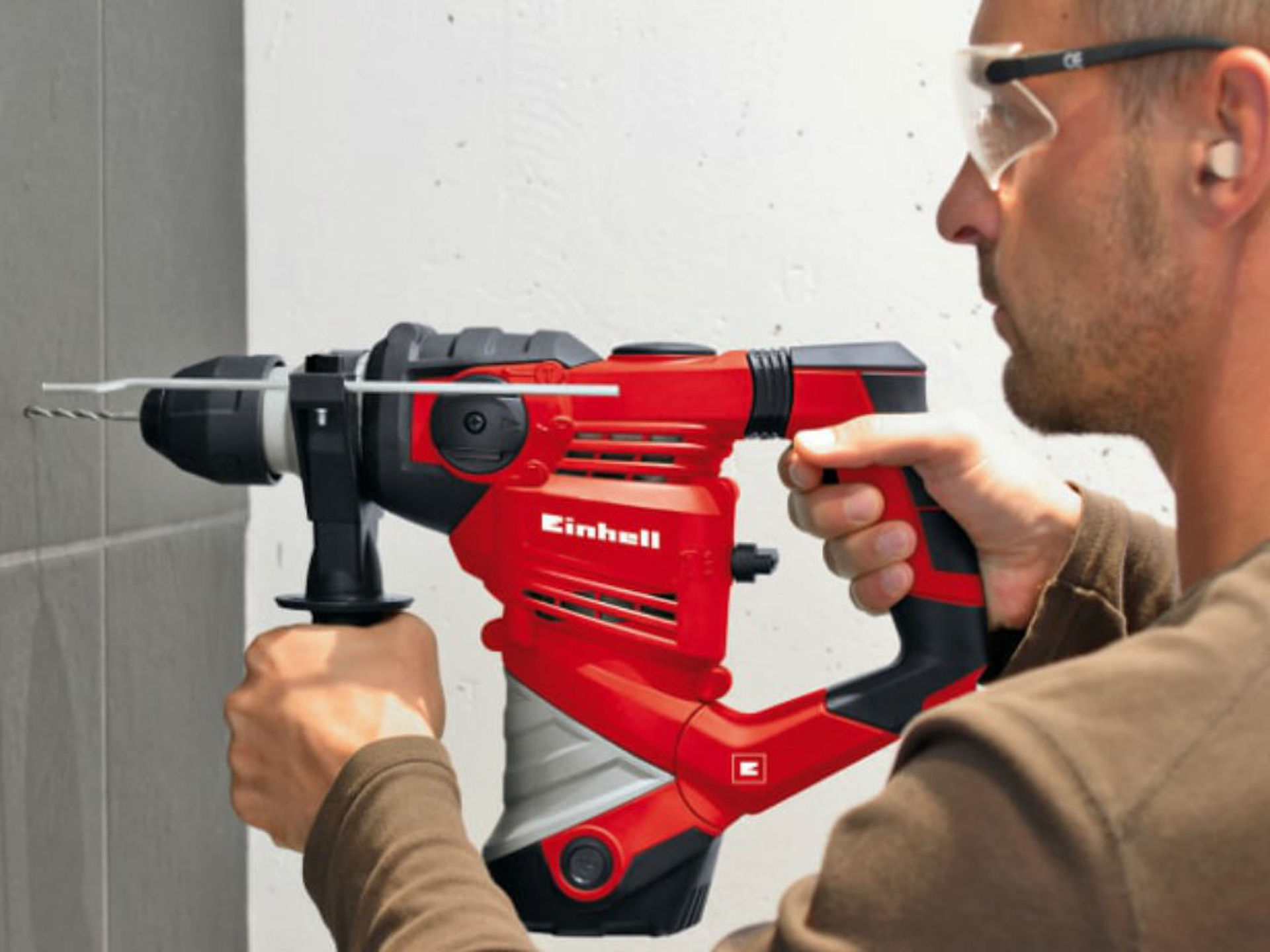
Chiselling with the rotary hammer
In addition to drilling holes in stone and concrete, a rotary hammer can also be used for chiselling work, such as removing tiles or even removing an entire wall. For this purpose, a chisel is inserted in the SDS holder of the chuck instead of a drill bit. The rotation movement necessary for drilling can be completely deactivated using a switch on the device. The rotary hammer thus becomes a light caulking hammer, which drives the chisel tip independently into the ground. Chisels for the hammer drill are available from specialist dealers in different lengths and with different tips.
Thanks to the standardised SDS system, which allows fast tool‐free change of drill bits and chisels, it is easy to use drill bits from any manufacturer. The SDS or SDS‐plus system allows the drill bit a small amount of lateral play and thus ensures perfect holes in the wall, as slight changes in the angle of attack of the hammer are not significant.

Accessories
In addition to standard drill bits and chisels, a wide range of accessories are available for the rotary hammer in the specialised trade. For example, with diamond‐coated core drill bits for drilling socket holes or classic chucks to work with conventional drill bits.
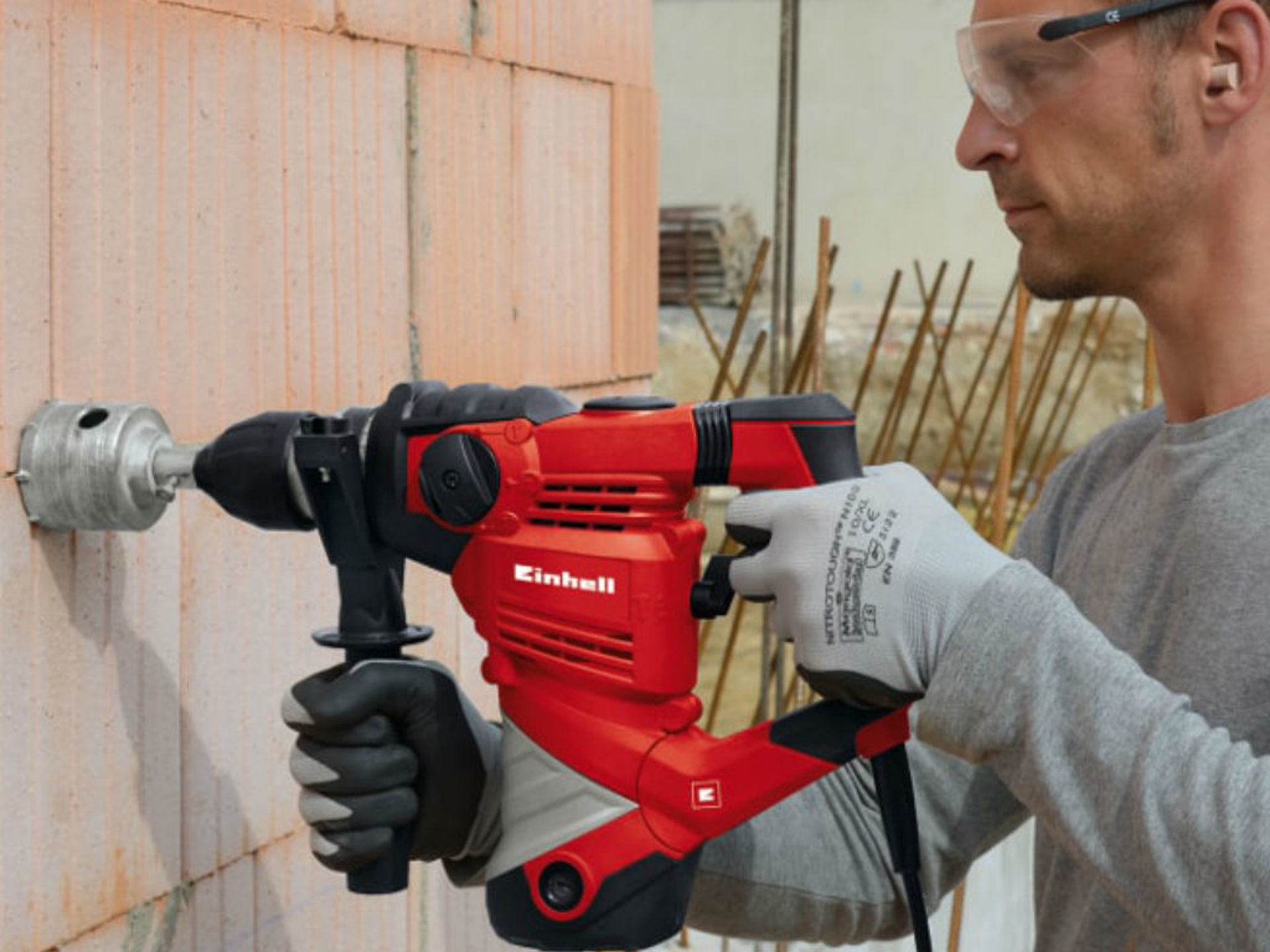
Rotary hammer or impact drill?
If you’re struggling with the choice, you should ask yourself which material you’ll be drilling most often. If the answer is hard concrete, the rotary hammer is clearly the better choice.
If concrete is the exception, it’s worth looking for a powerful impact drill. However, this should have a power consumption of at least 650 watts for working without becoming frustrated.
If you already have a powerful cordless screw driver and you do not need to be able to screw with the drill, your decision should be in favour of the rotary hammer.
